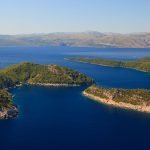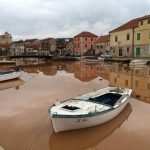Continuing our popular series, 25 Things to Know about Croatia, on November 11, 2017, a visit to one of the most charming destinations of all – Vrboska on the island of Hvar.
1 The Fortress Church
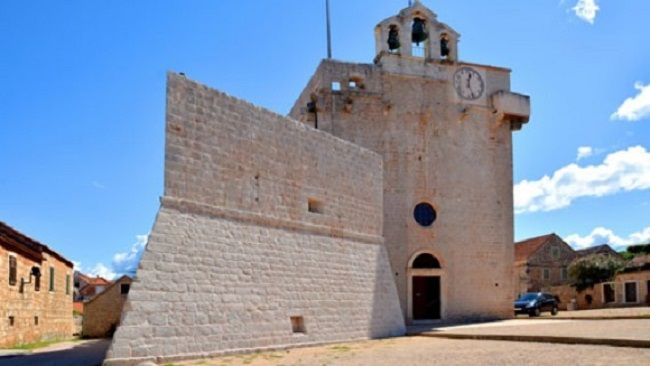
There is no questioning the most impressive building in the quaint old town of Vrboska – the unique fortress church of St Mary of Mercy. Built in the 16th century following the devastating attack by the Turks under Uyuz Ali, who burned the village in 1571 along with much of Dalmatia, the church fortress was built as a result to protect the inhabitants of Vrboska, and to good effect. The church fortress is open to tourists these days, with latest opening times advertised on the door (or check with the tourist board across the harbour). It is worth the visit just to climb up to the roof and admire both the impressive church bells and the astonishing view of Vrboska’s deep bay – a perfect vantage point to watch out for invading ships.
Take a tour inside and on top of the church here.
2 The biggest marina on the island of Hvar
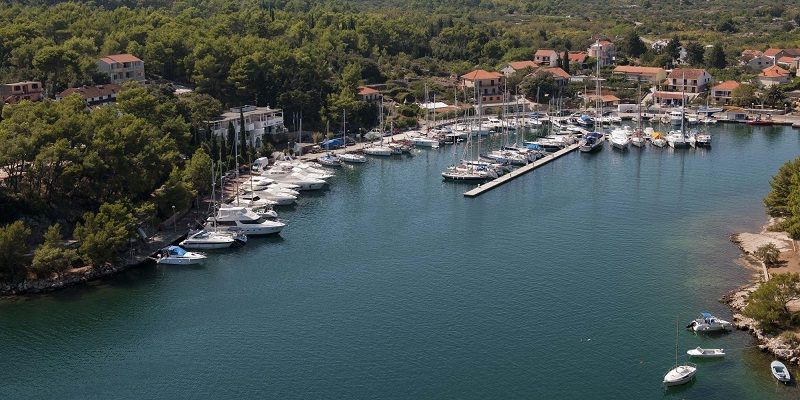
While many yachties heading for Hvar Town moor up at the ACI marina on Palmizana, there is also an ACI marina in Vrboska, the only one on the island proper. Vrboska’s deep bay makes it ideal for winter mooring, and the small town offers a quiet and tranquil mooring point away from the tourist masses. The marina has been gradually building up its capacity in recent years, but it still remains its Dalmatian charm and intimate feel.
3 The Vrboska canal – Croatia’s Little Venice
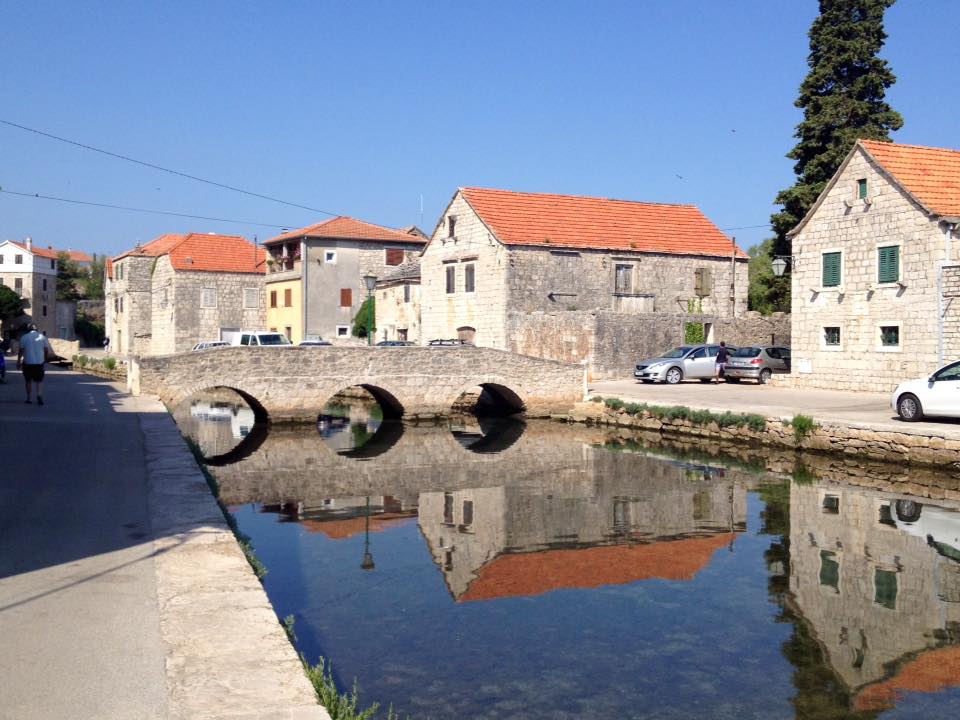
Vrboska’s most common nickname is ‘Little Venice’, and its canal network is little indeed – just the one canal, which joins from the harbour and open sea before fizzling out 100 metres away from the shore. No gondoliers here, but plenty of charm and gorgeous canalside stone houses. The stone bridges are particularly picturesque, and in season you can find wine tasting and klapa singing events which are truly magical. Look out for the traditional washing steps by the last bridge on the canal, where local women would do their laundry directly in the canal.
4 The 400-Year-Old Crying Cross of Vrboska
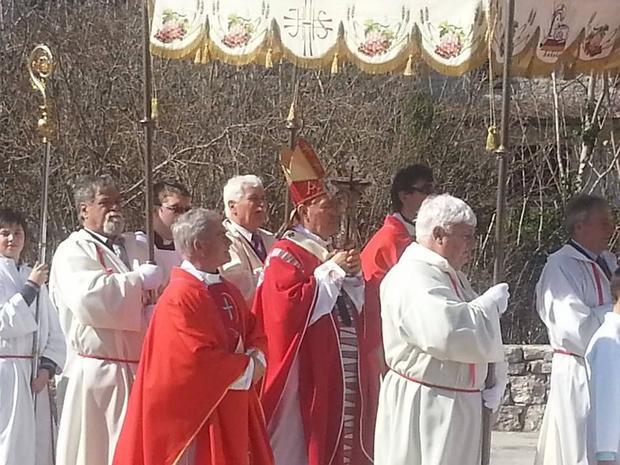
Vrboska is full of religious tradition and processions. One of the most interesting is the celebration of the crying cross, which celebrated its 400th year in 2014, and it was marked by a special procession through Vrboska.
In 1614, tensions were high between the two communities of Vrboska and Vrbanj. Vrboska’s two parishes were in major disagreement – whether to continue under the control of Vrbanj, or to break away and become an independent Vrboska. Young Katarina, the daughter of a local fisherman, saw tears come streaming from a small cross, an event which was signified as a cry for unity. The crying cross has been commemorated every year since. Learn more about the 400th anniversary procession, with pictures.
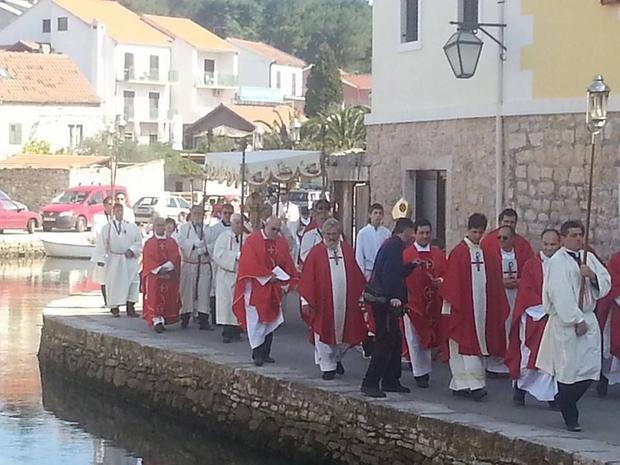
5 The Traditional Boats of Lantina
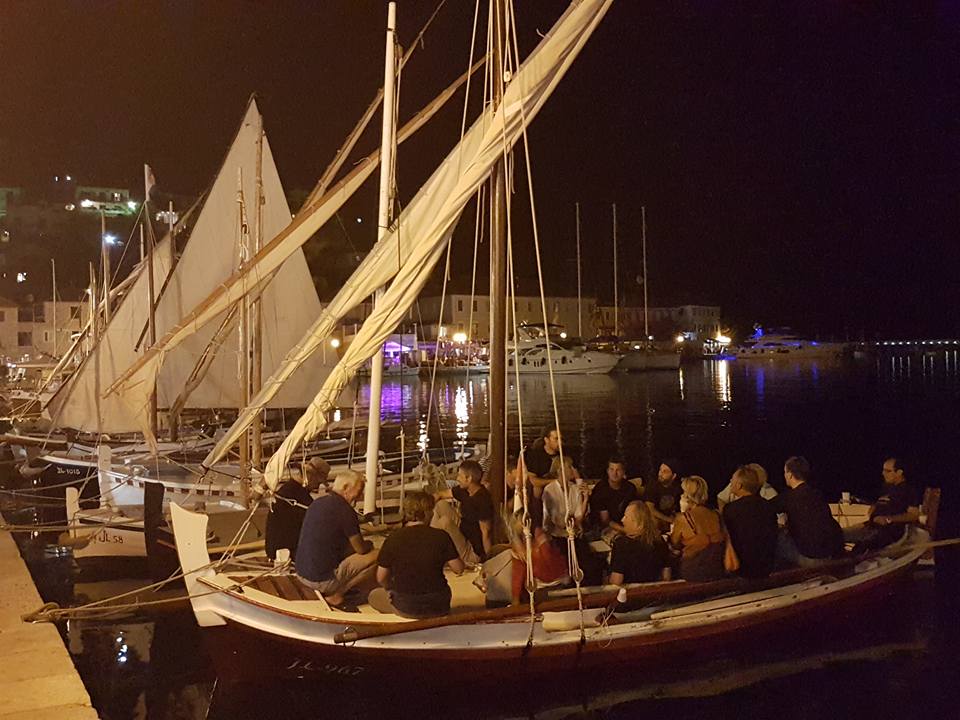
Vrboska is a very romantic destination, and the fabulous traditional sailing boats of the Lantina Association add to the atmosphere considerably. They appear at several events all over the island and beyond throughout the year (here they are in Jelsa, above), and they are the second biggest association of traditional boats on the Dalmatian coast after Murter. Learn more about a day’s sailing with the sailors of Lantina here.
6 Fishing Museum of Vrboska
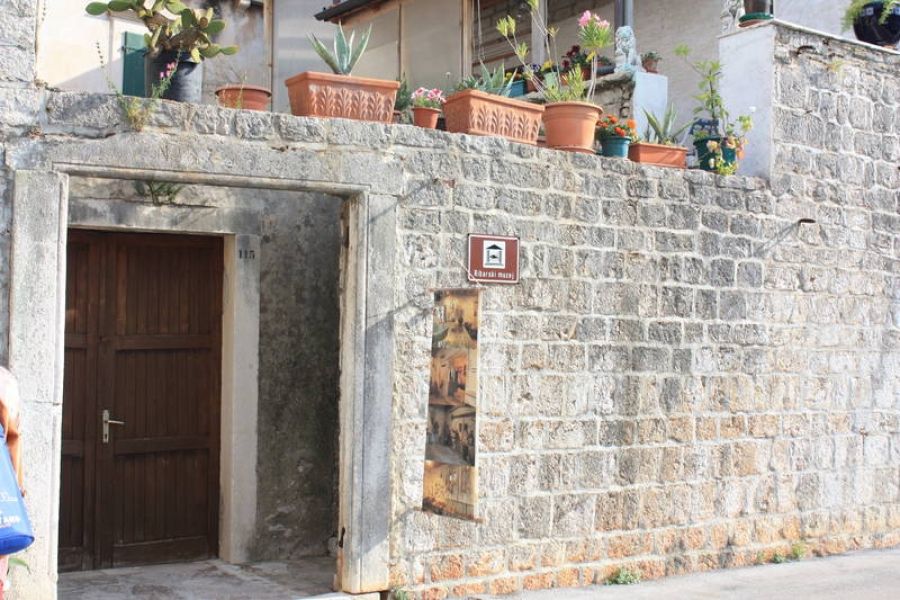
Vroboska was founded by seamen, and its history and heritage are inextricably linked to the sea. A wonderful fisherman’s museum with an excellent and very diverse collection awaits the curious visitor. You can learn more about it here.
7 The Wines of Vrboska – Pinjata
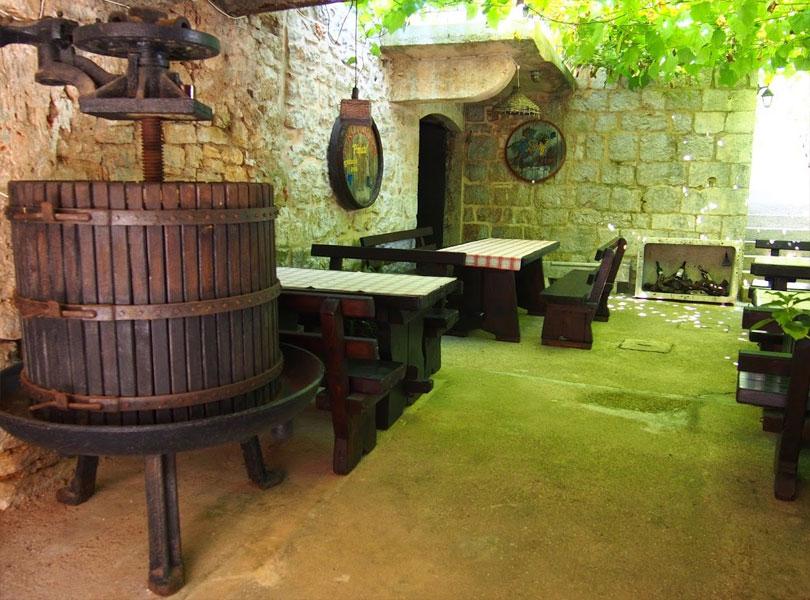
Walking through the delightful back streets of the old town, it won’t take long until you discover the Pinjata winery. Even if you are not a wine fan, it is worth stepping in to see the authentic konoba atmosphere the family has created. There is a trove of authentic detail, and the tasting of the island’s indigenous grape varieties is accompanied by a selection of local, home-made appetisers. Here was my first visit a few years ago – a very charming place.
8 The Wines of Croatia – Caric
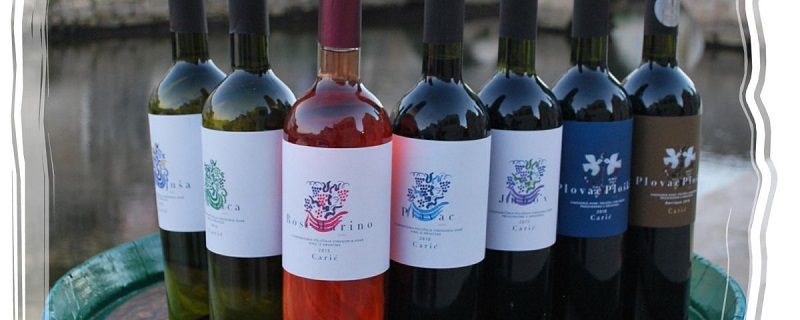
Vrboska’s wine profile has been raised considerably in recent years, as one of Croatia’s rising stars, Ivo Caric and wife Ivana, opened their tasting room on the canal in Vrboska. A small family winery attracting an increasing amount of critical claim, their wines are exported as far away as California, and one of their excellent Plavac Mali reds is now served in a three-star Michelin restaurant in Holland. I haven’t visited the new tasting room, but the feedback has been very positive.
Vrboska, the canal and wine tasting. A little atmosphere from a Hvar Wine Association tasting in the video below.
9 Vrboska has its very own UNESCO World Heritage Site
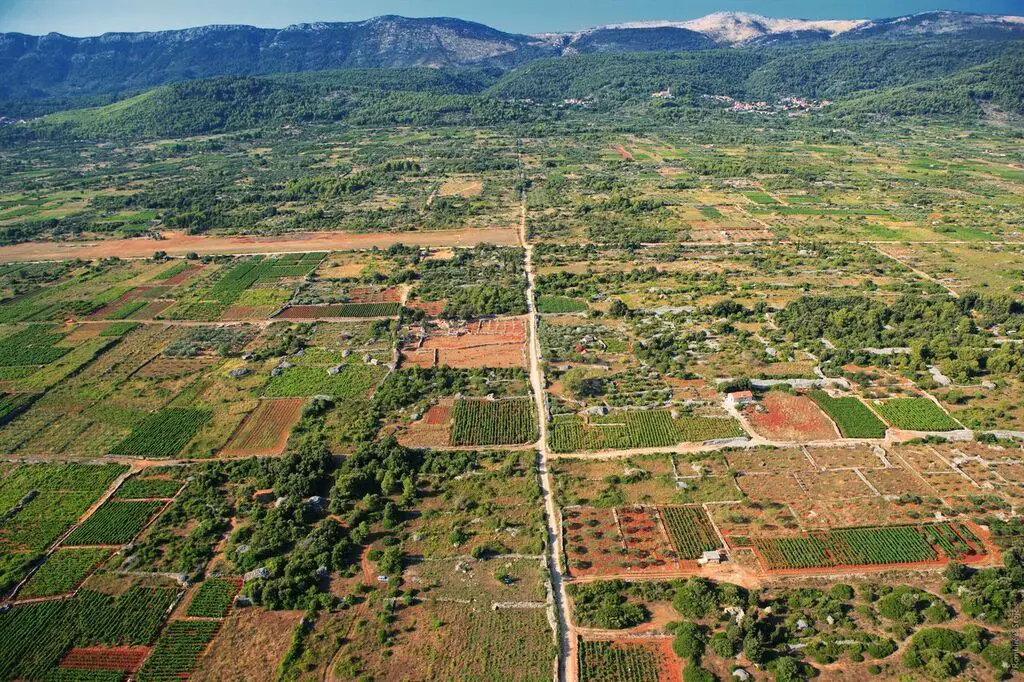
One of the great potentials of tourism on Hvar lies just at the edge of the village, one of Croatia’s 11 UNESCO World Heritage SItes. Not so many people visiting Vrboska actually know about its connection to the town, as the Ager, or Hora, as it is known in Croatian is better known in English as the Stari Grad Plain, an agricultural colony founded by the Ancient Greeks when they arrived in 384BC, and still cultivated in similar ways today. If someone had decided to call it the Vrboksa Plain instead, there might have been more focus on it from Vrboska. Here is an introduction to the Stari Grad Plain below.
10 Za Krizen Easter Procession
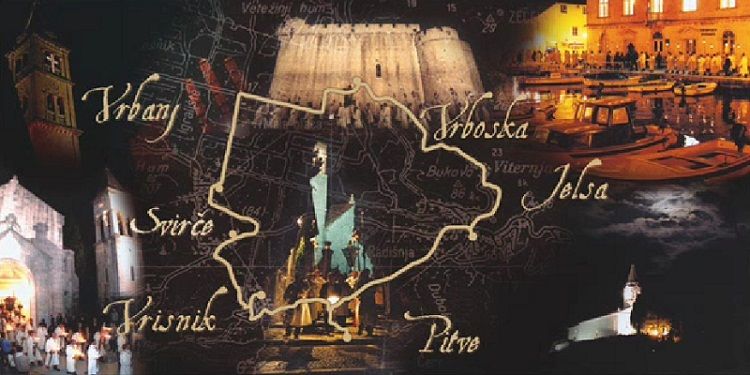
Vrboska’s UNESCO heritage doesn’t end there. The most famous procession on Hvar is called Za Krizen (Behind the Cross) and has taken place for over 500 years every Maundy Thursday. On that day, six cross bearers, one each from Jelsa, Pitve, Vrisnik, Svirce, Vrbanj and Vrboska, lead their acolytes and pilgrims on a 22km procession through the night, leaving at 22:00, visiting the other five settlements and their churches for reflection and prayer, before returning to their starting point at about 07:00. The procession was inscribed as intangible UNESCO heritage a few years ago, and you can learn more about it in the UNESCO video below.
11 Local Hero Matij Ivanic
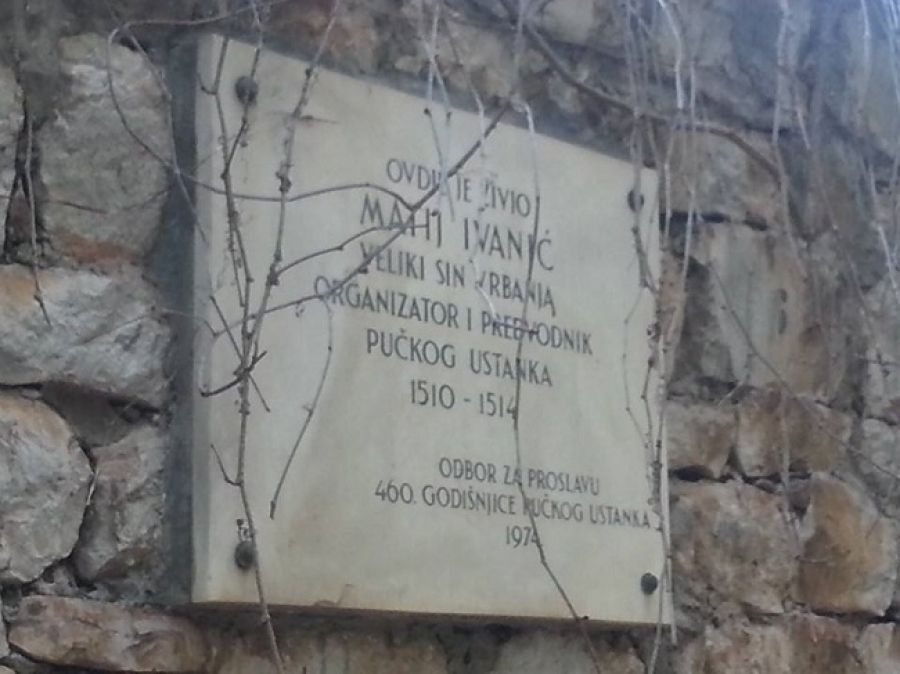
Vrboska was also the one-time home of Hvar hero, Matij Ivanic, who led the Great Rebellion from 1510 to 1514. Originally from Vrbanj (this photo is from the house of his birth in Vrbanj), there is also a plaque on the canal on the house where he lived.
12 Sardine Factory
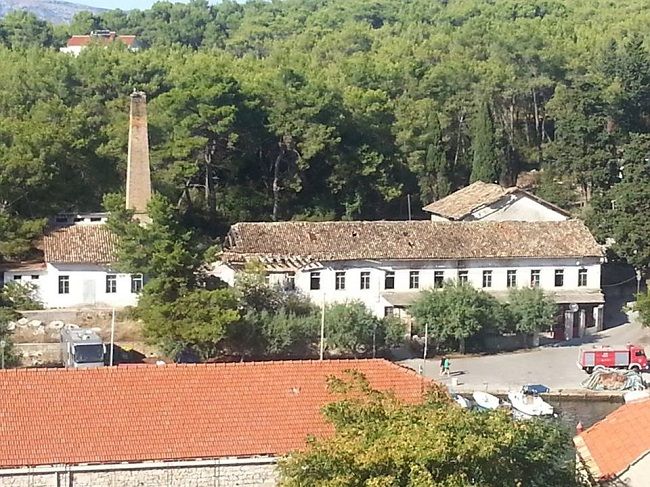
Vrboska’s fishing tradition is perhaps best exemplified in this lovely building across the harbour from the old town, which is sadly now in a greater state of disrepair since I took this photo from the roof of the fortress church a few years ago. The Vrboska sardine factory was in use until the 1970s, and has been slowly falling apart in recent years. It was sold to (I think) an Italian investor who I was told planned to turn it into an old people’s home, but he did not get permission. And so it sits. Sad, and I hope one day it will be restored to its former glory.
13 Naturist Vrboska: Camp Nudist
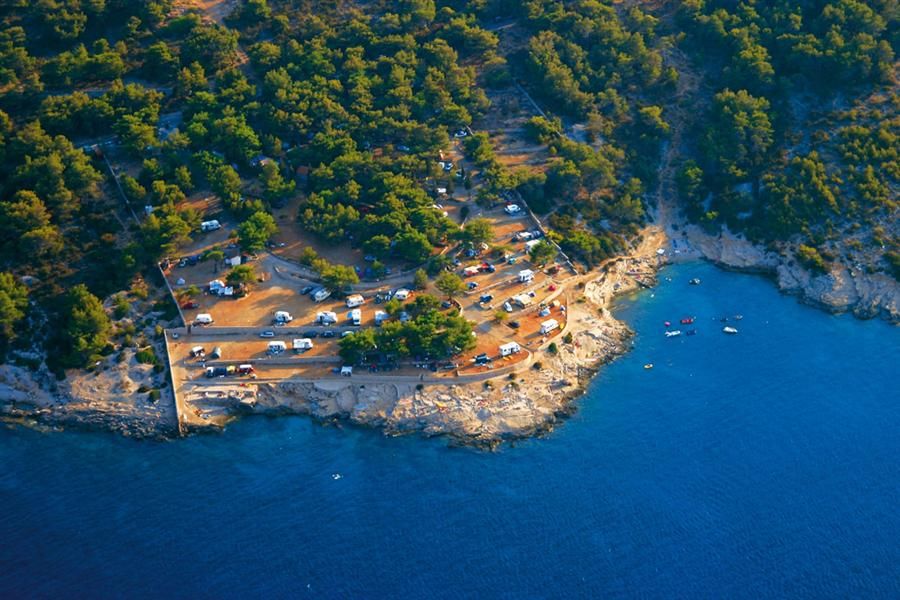
(Photo credit Croatia National Tourist Board)
Naturist tourism is big business, and Vrboska has one of the most important naturist camps on the coast. Kamp Nudist has been welcoming regular guests for decades, and the camp is a major contributor to Vrboska’s finest. Located discreetly away from the town through a pine forest, it is one of the premier naturist spots in Croatia.
14 Soline Beach
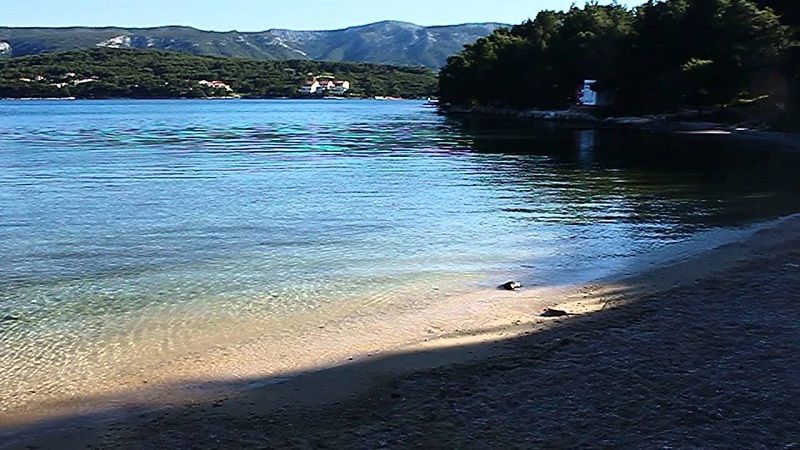
Not far from the naturist camp and through some other pine trees is Vrboska’s favourite beach, located 1km away from the town – Soline. It is a wonderful family beach with aqua park, whose tiny pebbles and shallow waters make it ideal for little ones. There is a restaurant and a bar, as well as facilities for the kids. No wonder it remains one of Hvar’s favourite beaches.
15 The Secret Garden Behind the Wall
Walk from Vrboska to Jelsa along the coast, and you will soon come across a high stone wall on the left, hiding a property on the water. Access is sadly not public, but if you do have the opportunity to visit, I encourage you to do so. The secrets behind the wall are based on a wonderful true story of a local boy who is shipped off to an uncle in the Americas at an early age for being a problematic child and a good for nothing. There he blossomed, returned to Vrboska at the age of 28, soon became mayor and lived to be 100.
Learn more about the secret garden and his story here.
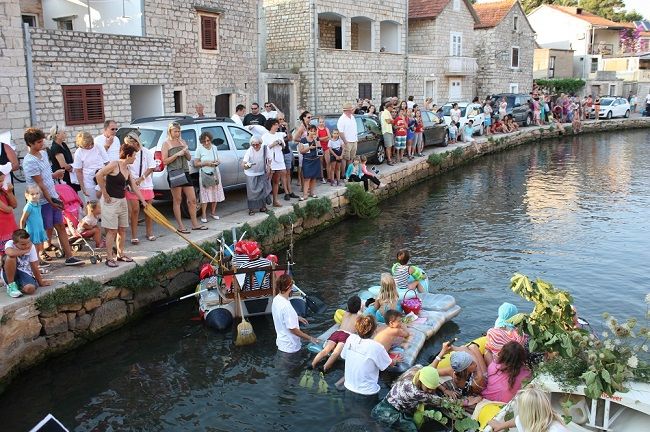
The founding sea-faring fathers of Vrboska probably had not envisaged how things would develop in the future, and they would no doubt have been surprised had they spent their summers in Vrboska these days. A community with a fine boating tradition now has a rather unusual addition, the annual crazy vessels race, where all kinds of enthusiasts put their boating creations into the canal for a race into the harbour. Most of them float (but not all) but great fun is had by all.
A report on a recent Crazy Vessels race here.
17 The Boat Festival of St Peter
Vrboska has numerous churches, and they are all celebrated. Among them is the tiny St Peter’s Church, slightly away from the old town, which holds an annual festival in late June, which I somehow never managed to visit. I have heard great things about it, however, and the Lantina boating community is at the heart of all of it, and there are sailing workshops and trips, a balote tournament and full cultural and gourmet offer.
18 Kayak Under the Canal Bridges
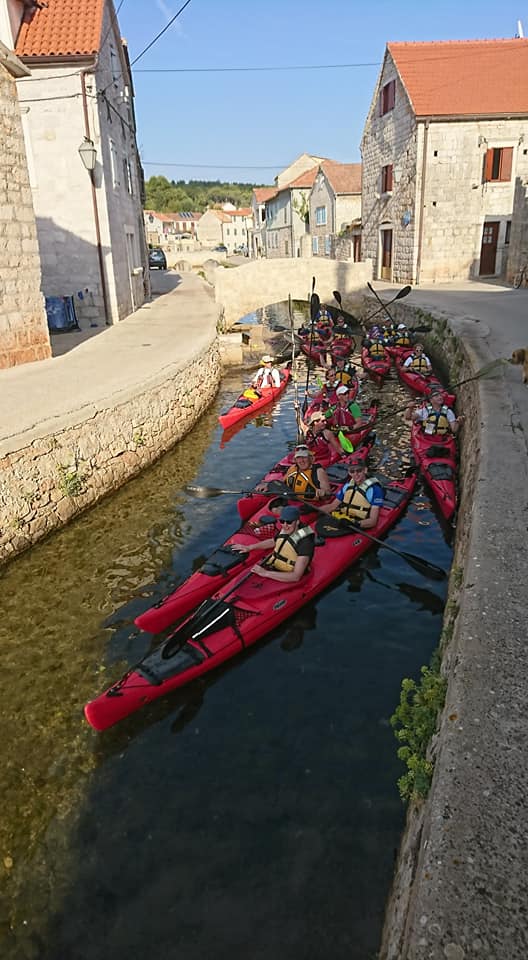
(Photo credit Vese Huljic, And Adventure)
Vrboska has a range of activities (and one of the few places for windsurfing on the island) and is also a popular kayaking destination. One of the most picturesque moments for kayaking comes from the team from And Adventure, who bring their guests right into the Vrboska canal, even kayaking under the bridge arches. This is what I call a full canal!
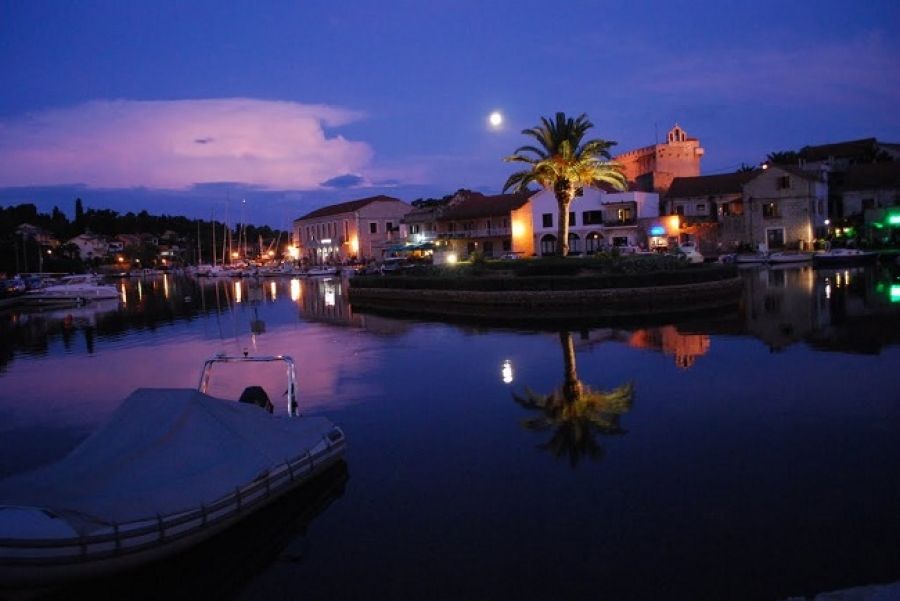
Could a single tree be more picturesque or cause more controversy? One of the great attractions of Vrboska’s beauty (for me at least) is the wonderful palm island in the middle of the harbour. With the imperious fortress church behind it, it makes for a stunning backdrop to lunch at Restaurant Lem. The palm is not native to the island and is actually a relatively recent addition, and there were plans to cut it down and replace it with more native vegetation, which would have changed the makeup of Vrboska, I think. Thankfully common sense prevailed, all the more so as a tree surgeon semi-resident of Vrboska offered up his thoughts.
20 Traditional Boat Taxi Between Vrboska and Soline Beach
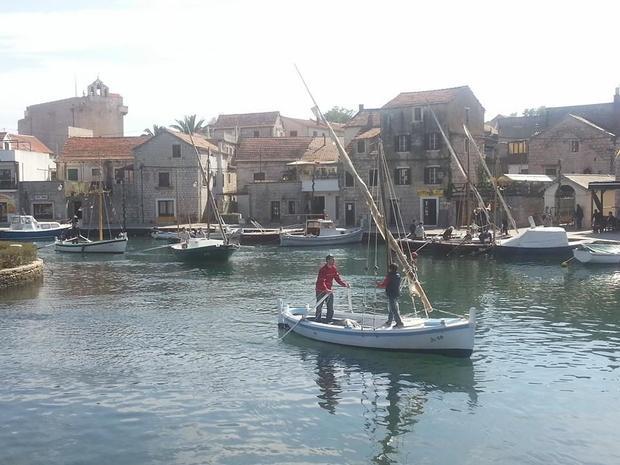
Could there be a more perfect way to hit the beach? Don’t miss the traditional wooden boat taxi transfer opportunity from Vrboska harbour to the beach at Soline.
21 The Day the British Bombed Vrboska, an Eyewitness Account
British visitors are very welcome in Vrboska these days, but it wasn’t always so. Vrboska was bombed by the British in the Second World War. After I did a story about it on Total Hvar, I had a wonderful email from a woman whose father was a child in Vrboska at the time, and he sent us this fascinating eyewitness account.
22 Quality Accommodation at Senses Resort
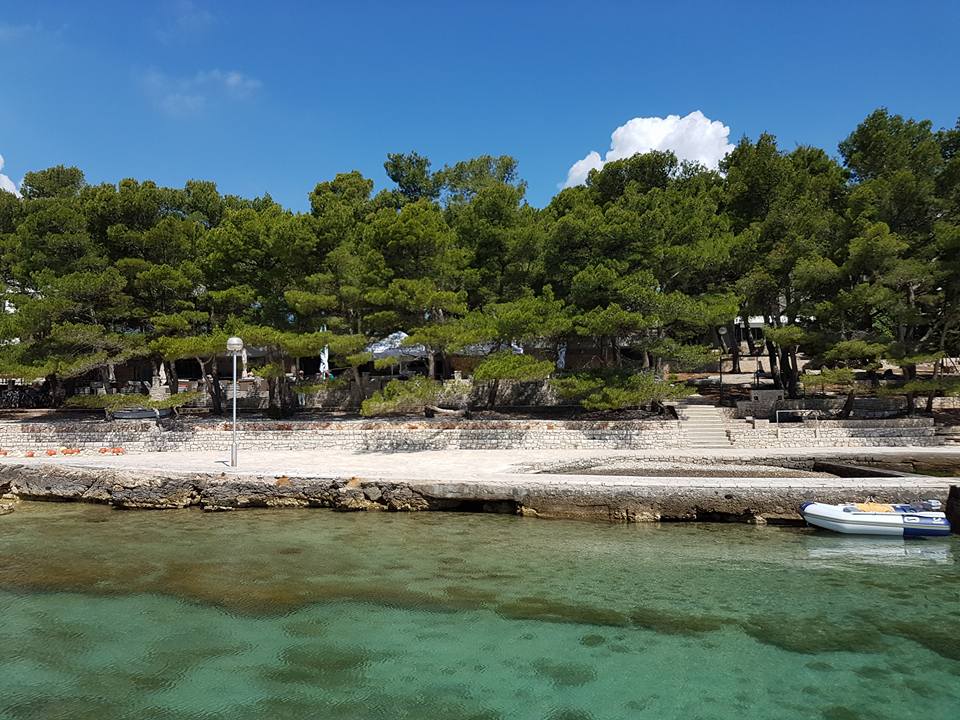
Vrboska’s tourism fortunes took a major upward swing a couple of years ago with the opening of Senses Resort, a 30 million kuna refurb of the old two-star Adriatic. The resort is of four-star quality and has enjoyed a superb season, prolonging the season in Vrboska for the good of all. Located in the pine trees close to Soline Beach, it is one of the great chill zones of the island if you want to pop in for a drink.
Take a tour of Senses Resort soon after it opened.
23 The Donkey at Restaurant Lem
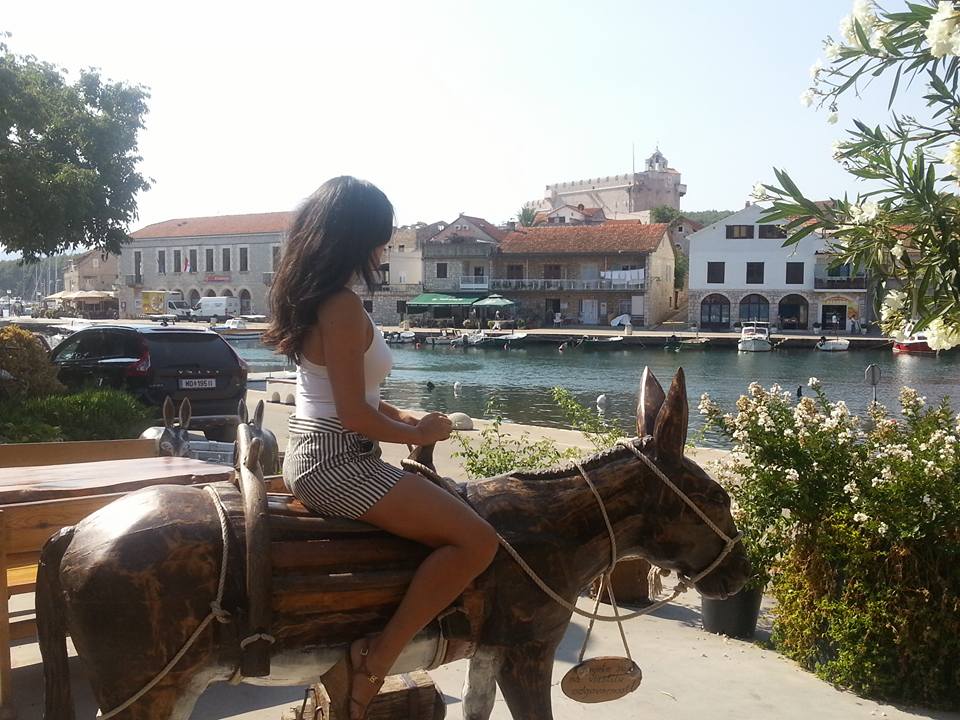
Vrboska has some fine restaurants all over the town, but my favourite, for both food and location, is Restaurant Lem. Situated on the other side of the harbour next to the tourist office, it has fabulous views of the palm island and fortress church. It is also a great place for kids, with the Vrboska playground a short distance away, and its much-loved donkey a major attraction for all ages.
24 The Chocolate Adriatic and the Sciga Tsunami
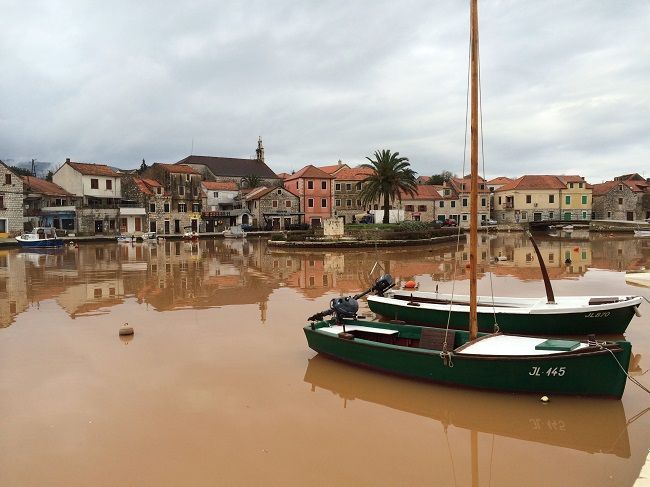
Never seen the sea turn chocolate brown? Come to Vrboska! This very unusual but perfectly natural phenomenon happens on occasion, as the soils from the Stari Grad Plan are washed into the sea from the canal. The effect is only temporary and the pristine azure waters of the Adriatic are quickly restored, but it makes for spectacular viewing.
As does the other natural occurrence that happens from time to time in Vrboska. If you have never seen the sea disappear, then Vrboska is the place to be. A mini-tsunami called ‘sciga’ sucks out the water then the tides rises rapidly and can cause flooding. You can get a better idea of it in the video below.
25 Once Vrbanj Harbour, Today Idyllic Tranquility
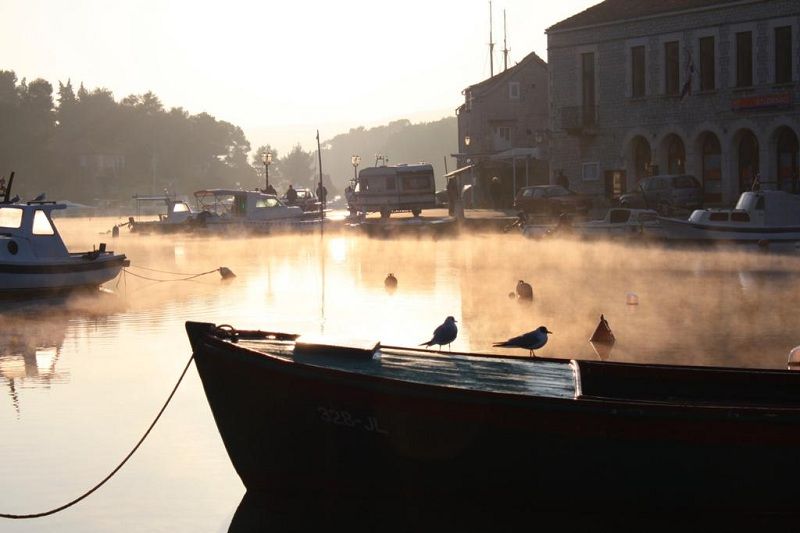
(Photo credit Miranda Milicic Bradbury)
Vrboska used to be Vrbanj’s harbour. Its permanent settlement started in the 15th century by fishermen from Vrbanj who got tired of walking back and forth (and the danger from pirates etc was reduced). Later on, agriculturalists also decided to start living here. The two sides each thought the others were uncultured primitives, creating a division that resonates to this day. (with thanks to Zdravko Podolski for this one).
Whatever its origins, Vrboska is one of Dalmatia’s prettiest destinations. When are you planning your visit?

